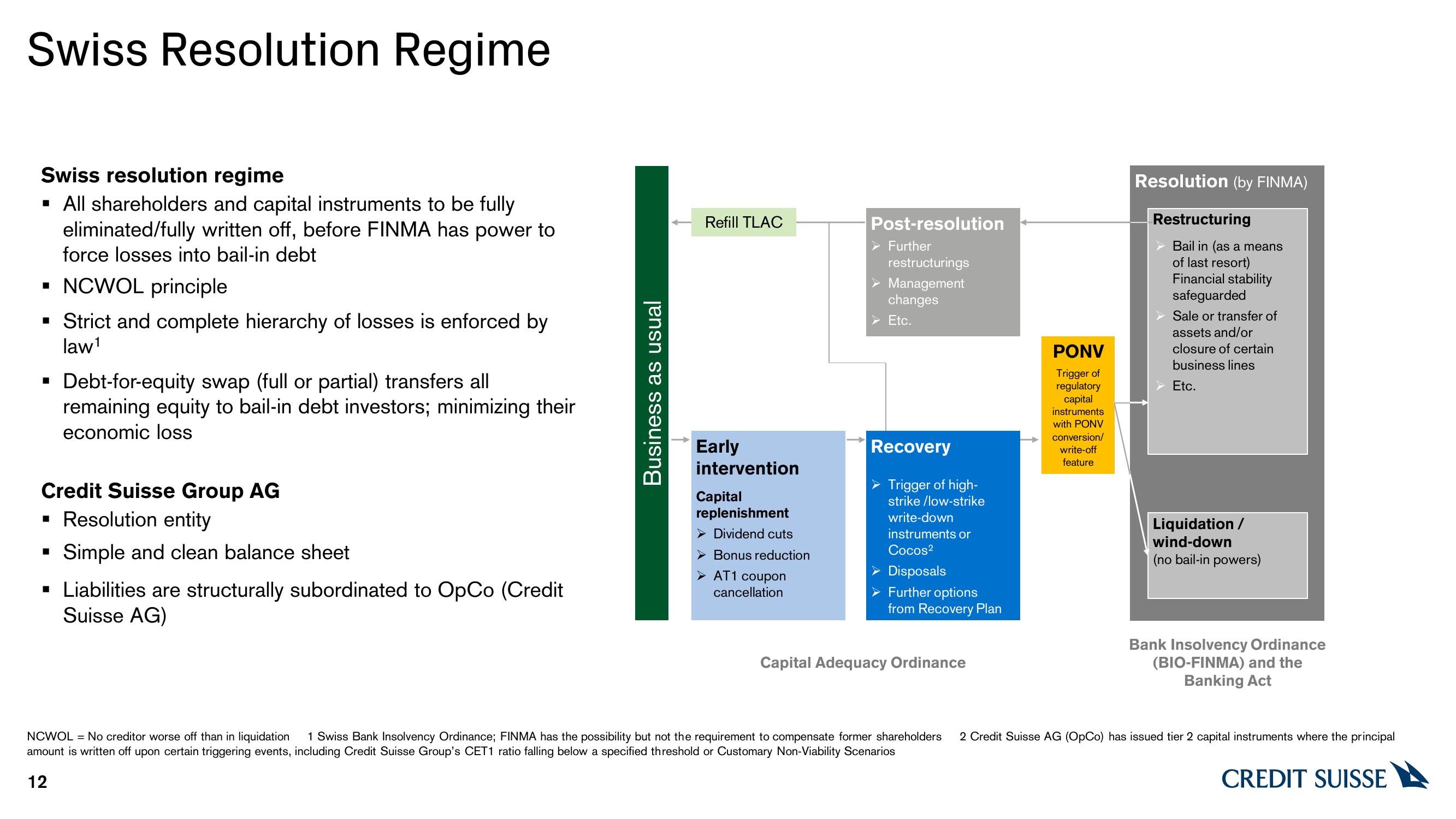Credit Suisse Credit Presentation Deck
Swiss Resolution Regime
Swiss resolution regime
▪ All shareholders and capital instruments to be fully
eliminated/fully written off, before FINMA has power to
force losses into bail-in debt
▪ NCWOL principle
▪ Strict and complete hierarchy of losses is enforced by
law¹
▪ Debt-for-equity swap (full or partial) transfers all
remaining equity to bail-in debt investors; minimizing their
economic loss
Credit Suisse Group AG
▪ Resolution entity
Simple and clean balance sheet
■
▪ Liabilities are structurally subordinated to OpCo (Credit
Suisse AG)
Business as usual
Refill TLAC
Early
intervention
Capital
replenishment
▸ Dividend cuts
➤ Bonus reduction
➤ AT1 coupon
cancellation
Post-resolution
➤ Further
restructurings
➤ Management
changes
➤ Etc.
Recovery
Trigger of high-
strike /low-strike
write-down
instruments or
Cocos²
Disposals
Further options
from Recovery Plan
Capital Adequacy Ordinance
PONV
Trigger of
regulatory
capital
instruments
with PONV
conversion/
write-off
feature
Resolution (by FINMA)
Restructuring
Bail in (as a means
of last resort)
Financial stability
safeguarded
Sale or transfer of
assets and/or
closure of certain
business lines
Etc.
Liquidation /
wind-down
(no bail-in powers)
Bank Insolvency Ordinance
(BIO-FINMA) and the
Banking Act
NCWOL No creditor worse off than in liquidation 1 Swiss Bank Insolvency Ordinance; FINMA has the possibility but not the requirement to compensate former shareholders 2 Credit Suisse AG (OpCo) has issued tier 2 capital instruments where the principal
amount is written off upon certain triggering events, including Credit Suisse Group's CET1 ratio falling below a specified threshold or Customary Non-Viability Scenarios
12
CREDIT SUISSEView entire presentation